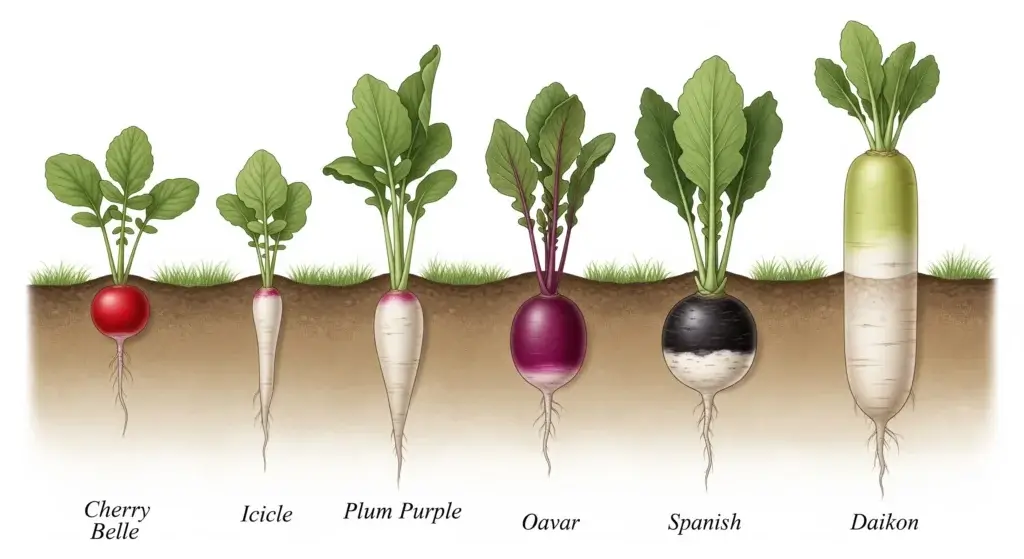
Ever looked at your celery base and wondered, “Can this thing grow again?” Good news—it can!
Celery is a kitchen scrap superhero, perfect for zero-waste champs and anyone wanting to save money (and impress their friends).
I’ll show you easy steps to revive your celery, dodge rookie mistakes, and get it thriving in soil—no gardening degree needed.
Ready to turn scraps into crunchy gold? Let’s go!
Why Regrow Celery at Home?
Before we dive into the juicy how-to, let me drop some truth bombs on why regrowing celery is totally worth your time:
- Save money — turn one bunch into multiple harvests. Your wallet will thank you.
- Cut kitchen waste — less trash, more tasty snacks. Mother Earth gives a thumbs-up.
- Kid-friendly fun — teach the little ones that plants can come back like a sequel to their favorite movie.
- Small space? No problem. Perfect for apartments, tiny kitchens, or that balcony garden you’ve been dreaming of.
- No fancy gear or green thumb required. Just a bit of water, light, and patience.
Fun fact: A 2021 study in Frontiers in Sustainable Food Systems shows home-growing isn’t just cool—it boosts food security and helps us all act a bit greener.
- Read also: How to Treat Celery Leaf Spot: Effective Methods
- Read also: Summer Celery Watering Schedule: Keep Your Celery Thriving
What You Need to Regrow Celery
No backyard? No problem. You can regrow celery right on your windowsill with just a few simple things:
- The bottom 2 inches of a celery stalk — yep, that sad little base from your grocery haul
- A small glass or bowl to hold water (your celery’s new swimming pool)
- Fresh tap or filtered water — celery likes a clean drink
- Toothpicks (totally optional, but handy for keeping your celery steady)
- A sunny windowsill—because even celery loves a little sunshine glow-up
- Potting soil and a container for when it’s time to move your celery baby into the garden (or your countertop jungle)
That’s it! Ready to turn trash into treasure? Let’s get growing.

Step-by-Step: How to Regrow Celery from Kitchen Scraps
Step 1: Cut and save the celery base
Once you’ve chopped off those tasty stalks for your stir-fry or salad, don’t toss the bottom 2 inches—the magic happens here.
This little stump is the root zone that will grow new celery babies.
Pro tip: Grab organic celery if you can. It’s less drama with chemicals and better for your regrow mission.
Step 2: Place in water
Pop that celery base cut-side up into a shallow glass or bowl with about 1 inch of water.
You can stick a couple of toothpicks in the sides to keep it balanced like a celery tightrope walker, with the base partially submerged.
Plop your setup on a sunny windowsill or any bright spot.
Celery’s basically a sun worshipper and wants at least 6 hours of rays a day to thrive.
Step 3: Change the water regularly
Swap out the water every day or two to keep mold and funky stuff at bay.
After 3 to 5 days, watch closely—green shoots should start poking up from the center, and tiny roots will peek out at the base.
It’s like celery’s version of a baby photo shoot.
Step 4: Watch for growth
About a week in, your celery will look like it’s had a serious growth spurt:
- Shoots hitting 1–2 inches tall
- New leaves popping up in the middle
- Roots getting stronger and ready for the next step
When you see this, it’s showtime—your celery is ready to graduate into soil for full-on stalk status.
How to Transplant Celery into Soil
Your celery’s looking good and ready to move out of its water spa—time to give it a proper home!
What you’ll need:
- A pot with drainage holes (6–8 inches deep—think cozy but not cramped)
- Quality potting mix or compost (good food = good vibes)
- Optional: A garden bed if you’re going full outdoorsy
How to plant:
- Fill your pot or garden bed with moist soil—no mud puddles, but don’t let it dry out like the Sahara.
- Dig a shallow hole and tuck in the celery base, leaving those fresh green shoots peeking out like it’s waving hello.
- Gently press the soil around it, like tucking your celery into bed.
- Give it a good drink right after planting—celery loves a thirsty welcome.
- Set the pot in a spot with some sun but avoid the midday scorch. Celery’s more of a morning person, not a noon sun warrior.
Pro tip: Keep the soil damp but not soggy—celery likes it like Goldilocks: just right.

The Science Behind Regrowing Celery
So, here’s the geeky but cool part: celery is a biennial plant, which means it plays the long game—living its life over two growing seasons.
The base of your celery stalk?
It’s packed with sleepy little nodes just waiting for the right cue—water, warmth, and light—to snap awake and start growing again.
This comeback act is called tissue regeneration—basically, celery’s way of cloning itself.
It’s not just celery; veggies like lettuce, green onions, and carrots have this superpower too.
Think of it like the X-Men of the plant world.
A 2020 study in Plants (shoutout to MDPI) talks about something called “phenotypic plasticity.”
Fancy words for plants being total shape-shifters, adapting and bouncing back no matter the conditions.
So next time you regrow celery, just remember—you’re tapping into some serious botanical superhero moves.
Pretty cool for a veggie, right?
Indoor vs Outdoor Regrowing: Which Is Better?
| Feature | Indoor | Outdoor |
| Light control | ✅ Yes |
❌ Depends on weather
|
| Pest exposure | ❌ Minimal |
⚠️ Common (slugs, aphids)
|
| Growth rate | ⏳ Slower |
🚀 Faster with full sun
|
| Space requirements | 🪴 Compact |
🌱 Requires garden area
|
If you’re a beginner, start indoors, then transplant outside once the plant is strong enough and temperatures are mild (ideally 50–70°F or 10–21°C).
Common Mistakes to Avoid
Regrowing celery is pretty chill, but watch out for these classic slip-ups that can slow down or even kill your progress:
- Skipping water changes — stale water = mold and rot. Nobody wants that drama.
- Overwatering — drowning your celery is not a spa day. Keep the base just partly submerged.
- Not enough sun — celery’s like a diva; it needs its daily glow to grow strong.
- Ignoring transplant time — roots eventually crave real food (aka soil), so don’t leave it hanging.
- Bad drainage — soggy soil = root rot. Your celery deserves better.

How Long Until You Can Harvest?
Regrowth kicks off fast, but you’ll need about 3 to 5 months before your celery hits full-on crunch mode.
Factors like sunlight, temperature, nutrients, and steady watering all play a part.
You can start snipping the outer stalks once they’re 6–8 inches tall—just leave the inner ones to keep the celery party going.
Patience pays off, and soon you’ll be munching on homegrown celery like a pro.
- Read also: A Step-by-Step Guide: How to Regrow Celery From Scraps
- Read also: Growing Peppers in Containers: Tips for Small Spaces
Final Thoughts: Start Growing with Your Scraps
Regrowing celery from kitchen scraps isn’t just a cool science trick—it’s a smart, eco-friendly way to cut waste and get closer to your food without even leaving the kitchen.
All it takes is water, sunlight, and a little TLC to turn what you’d normally toss into a fresh, crunchy harvest.
Give it a shot once, and your celery scraps might just become your new kitchen MVP.
Trust me, once you start, you’ll never look at celery bases the same way again.



